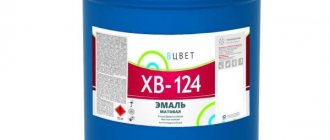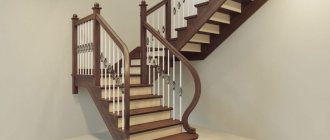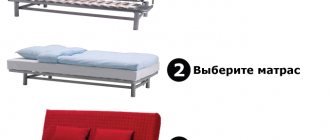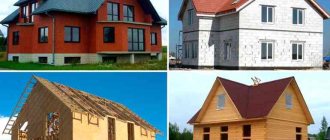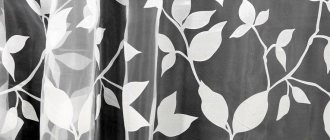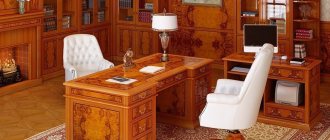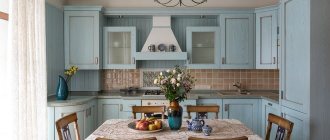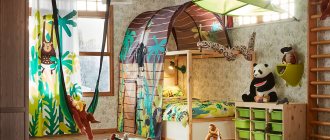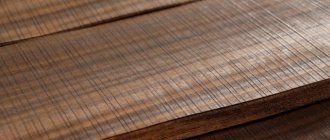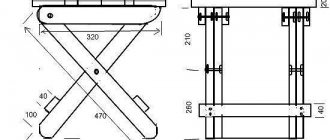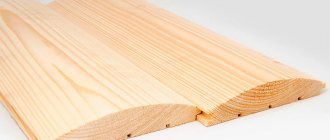Veneer is a popular material in carpentry. This is a thin cut from solid wood, which is a cross between a sheet and wood chips. The material is produced using special technologies, obtaining different grades. All kinds of wood are suitable for this, but the best options come from valuable or hard varieties.
The scope of application of veneer is extensive. This is not only the most popular furniture production, but also the creation of building materials, car interior trim elements, making matches or musical instruments.
Characteristics and description of veneer
Veneer refers to a thin cut from solid natural wood. The result is a plate no more than 3 mm thick. This is a standard size, but there are thick cuts up to 1 cm. The cut can be made by planing, peeling, or sawing.
After obtaining a wood layer, it can be subjected to various types of processing, achieving all sorts of effects.
Veneer production is an economical production. A block no more than 3 cm thick will yield more than 50 square meters. m of product. This allows you to take care of nature, reducing deforestation.
Recently, technologies have emerged for creating veneer from artificially obtained material based on inexpensive wood. As a result of subsequent processing, you can obtain a sheet that imitates more valuable raw materials.
In general, veneer has the following useful qualities:
- Beauty. In appearance, veneer is not inferior to solid wood. From cheaper raw materials it will be possible to create imitations of various breeds. Products using veneer look presentable.
- Ease. The thinnest wood cut allows you to be more careful with nature. Products containing veneer have less weight.
- Practicality. Veneered items have a quality that is not much inferior to their solid wood counterparts. They are not afraid of various influences and serve for a long time.
- Maneuverability. The structure of the material allows you to implement ideas of any complexity. At the same time, you don’t have to make special efforts to get results.
- Price. The cost of products with veneer is less than their solid counterparts. With minor differences in characteristics, this is a significant plus.
The variety of veneers is amazing. As a result of processing raw materials, you can get all kinds of shades, patterns, textures. You can work with veneer with minimal carpentry skills. It is enough to study the minimum information to start practicing.
Production technologies
There are many ways to obtain wood cuts. The process is simple and can be done even at home. For industrial volumes, we use equipment that is constantly being improved, allowing us to obtain high-quality products.
In addition to natural veneer, there are other types that are difficult to manufacture.
Fine-line. It is a reconstructed material. Combines two types of processing. The process looks like this:
- Obtaining plates using the peeling method.
- Drying.
- Sorting.
- Coloring.
- Adhesive processing.
- Pressing.
- Planing for formatting purposes.
The final product is 94% wood. The remaining percentage comes from glue and pigments. The advantage of the fine line is that different designs can be reproduced on the surface. It is heat-resistant and not afraid of moisture. Varnish coating increases service life.
Multispon. The technology makes it possible to use production waste left over from the production of wood cuts. Wood chips are joined using melamine resins. The patterns and textures of this veneer are varied. Geometric patterns or bright colors with woody lines - nothing is impossible for an artificially created material.
There are three main ways to attach a wood plate to a base:
- Hot veneering. Under the influence of high temperatures and pressure, the cladding is attached to the surface.
- Membrane. For this you need a vacuum installation. Suitable for 3D objects.
- Cold. This is done using glue or resins.
Application of veneer
The scope of application of veneered material is amazing. It is suitable for use in the process of repair, decoration, creation of new or restoration of old furniture. In the production of some types of plywood, matches, doors and much more, veneer is needed.
The area of use depends on the type of material. Hardness, color, characteristics artificially obtained as a result of various processing: everything can have a meaning.
Manufacturers
All furniture factories work with veneer, but we will look at the most popular of them, whose furniture really deserves attention.
- "Shatura-Furniture". The domestic company has been pleasing us with its products for half a century. It has a network of branded stores throughout the country. The quality of furniture has been repeatedly awarded with awards at various exhibitions.
- Rival. Among the ten best factories in Russia. The furniture is well designed and has excellent fittings.
- "Pinskdrev". The largest Belarusian holding with 130 years of experience. He became famous for producing environmentally friendly furniture using high-quality veneer.
- IKEA. A famous Swedish manufacturer that produces affordable and varied products based on wood, composite boards and veneer.
Wood species for veneer
Different types of wood are suitable for obtaining veneer. The best material will come from oak, cherry, larch, walnut, ash. These options are suitable due to their solid structure.
It is possible to make veneer from softwood, but it is not suitable for every application.
Oak
Oak is distinguished by its strength and durability. Veneer made from this species is considered to be of the highest quality. Most often it is obtained by planing. This is a costly technology, but it leads to the creation of the highest quality material, comparable to solid wood.
Oak veneer is often used to make expensive finishing materials. This is parquet, wall panels. Oak veneer is popular for finishing doors. This option is great for making furniture.
Nut
Natural walnut has a pleasant golden-grayish tint in a light range. There are options with more saturated colors. It has medium density.
Veneer from this species is obtained in different ways, most often through classic peeling or planing. The finished material is used for finishing furniture and doors.
Ash
Like walnut veneer, ash material is in demand for finishing and furniture production. This is a tree with a beautiful natural pattern that is preserved after cutting the plates.
This wood also has a wide range of shades. There may be very light grayish-milky, pinkish, yellowish tones. Sometimes you come across colors in the reddish-violet spectrum, as well as various mixtures. In terms of strength, ash is slightly inferior to oak. This veneer is used to make furniture, finishing materials, and inlay plates.
Birch
Birch veneer is classified as a medium-dense material. It has a pleasant shade ranging from yellow-white to light shades of brown. There is often a slight silky sheen.
The incredibly elegant natural pattern of the wood pleases us. The decorative effect is enhanced by traces left by pests. Birch veneer is considered an inexpensive material. It is popular for cladding in the construction industry.
The material made from Karelian birch is of particular value.
Types of cutting
At wood processing plants, veneer is produced using special equipment.
Wood is sawn according to the following technologies:
- To cut wood using the radial method, take the core of the tree. This method produces wood that is uniform in shade and texture and is resistant to various mechanical damage.
- Using tangential cutting, a coating with a clearer structure and pattern is obtained. This method is characterized by lower quality compared to the previous one, but is less expensive
Veneer colors
The palette of veneer shades depends entirely on the raw materials used to produce the material. Naturally, you can achieve light, almost white surfaces. These are maple, acacia, ash. Darker rocks produce sheets of various shades. The color may have a beige, gray, or pink undertone.
An additional decorative effect is created by the natural wood pattern.
Both the color and the natural pattern can be emphasized using various influences. As a result of all kinds of processing that natural data are subjected to, something special can be created.
Price
The price of veneer consists of the following factors:
- Features of production, labor costs.
- Presence and quantity of waste.
- The complexity of the equipment used.
- The width of the sheet, which depends on the thickness of the log.
- Types of wood.
- Valuables, rarities of raw materials.
The most expensive is sawn, the cheapest is peeled. Planed is in the middle price category. It comes in different varieties, so the price range for it is wide. Natural veneer is more expensive than artificial veneer.
Veneer products
Veneer is in greatest demand for making furniture and lining interior doors. They occupy most of the scope of application of the material.
Interior doors
Very often, veneer is used for the production of doors. This application is justified. A door made of solid or exclusive wood will be expensive.
Frame doors made of natural veneer with white paint.
A product based on inexpensive wood and veneered as a veneer will cost significantly less. Externally, the difference is usually not visible. Performance characteristics are also not very different.
Furniture
Another area where veneer is most popular is furniture production. Veneer is used to cover any furnishings. These can be simple or complex in design and relief of the product.
Veneer is used not only in the production of new things. It serves as an excellent opportunity to restore old items.
Veneer is one of the most popular wood products for the furniture industry.
The material is also used in other areas: construction and repair, production of various accessories, match production. Natural material has excellent characteristics, not inferior to solid wood.
Care
In order for veneered items to serve for a long time and be pleasing to the eye, they must be maintained in proper condition. To do this, take into account the characteristics of the wood plates with which the surfaces are covered.
- Stains appear not only from spilled liquids, but also from contact with hot or cold objects. This is especially true for kitchen tables. Place the kettle or pots only on special stands.
- The moisture resistance of veneer is not unlimited. Prolonged contact with large amounts of liquid damages it. The material may peel off.
- Abrasive substances and hard brushes leave scratches. All types of cleaning are carried out only with soft napkins, without aggressive chemicals.
- Antistatic agents will allow you to wipe dust from surfaces less often.
- Impacts and mechanical impacts cause chips and cracks.
- Veneer changes color from prolonged exposure to ultraviolet radiation. If possible, furniture with cladding is placed away from windows.
To disguise small scratches, special pencils and waxes are used. The coating is sanded very carefully, because the thickness of the veneer is only a few millimeters. In this it loses to solid wood furniture, which can be reconstructed even in case of severe damage. But in general, objects made from veneered MDF are more stable and resistant to environmental influences. The surfaces are periodically polished to recreate the original appearance. Following these simple rules will extend the life of veneered furniture.
PARRA offers spectacular veneer furniture at an attractive price. Here you will find many furnishing options in different colors and designs. Visit our online catalog and choose stylish furniture to decorate your home!
How to lay veneer boards?
The installation of this building material is simple if you strictly adhere to the technology. During the installation process, you need to consider:
- Laying of rough floors is carried out on logs; ordinary nails are used for fixation (finished floors are laid on top of rough floors).
- Before installation begins, the boards must be left in the room where the work will take place for at least 14 days.
- To fasten the boards together, it is recommended to use U-shaped brackets, wedges or special clamps.
- The distance between the lags affects the quality of the floor (the smaller the distance, the higher the quality of the surface).
- When laying, no gaps should form between the boards (in the case of curved walls, the board must be sawn at the required angle).
- The joints of the boards should be on the joists.
- During installation, it is recommended to leave a gap of about 1 cm wide near the walls, since changes in humidity can cause the surface to expand (plinths are used to mask the gap).
Veneered parquet boards are more expensive than conventional lumber, and the installation process is also more cumbersome and time-consuming, but the durability and high quality of the lumber completely cover these shortcomings. Also, due to the strong adhesion of the panels, the floor will not creak, which is important for creating comfort in the house.
The article uses photographs from the site
.
Recommendations for selection
With the help of such facing material, exclusive things are created. Of course, these are one-piece items that are made to order by experienced craftsmen. The effect is achieved by skillful selection of wood patterns. The result is real works of art with intricate patterns formed by nature itself.
If paired items are required, such as bedside tables, take into account the pattern on the front surface. It is good when they complement each other, since it is impossible to obtain exactly the same patterns when finishing with veneer, given its natural origin.
The ability to hide minor damage is another criterion by which furniture is selected. Scratches and chips inevitably appear on the surfaces of tables and kitchen facades over many years of use. The joints of veneer sheets are vulnerable, because it is not a solid mass, but a sheet glued to the base. Only minor damage can be masked with special means. The plate of natural material is quite thin, so it will not be possible to sand it a few millimeters, as is done with a completely wooden surface.
